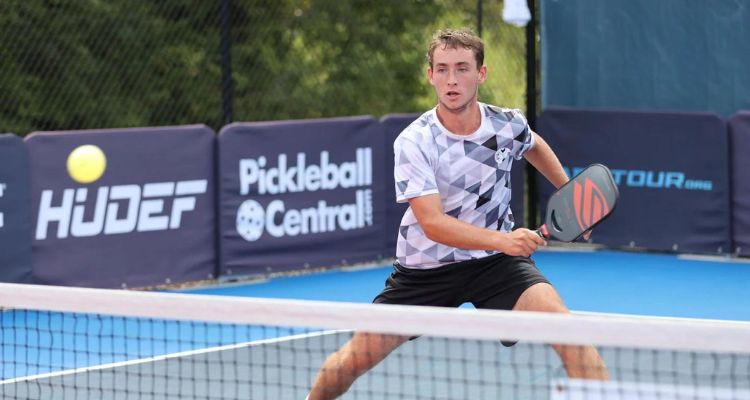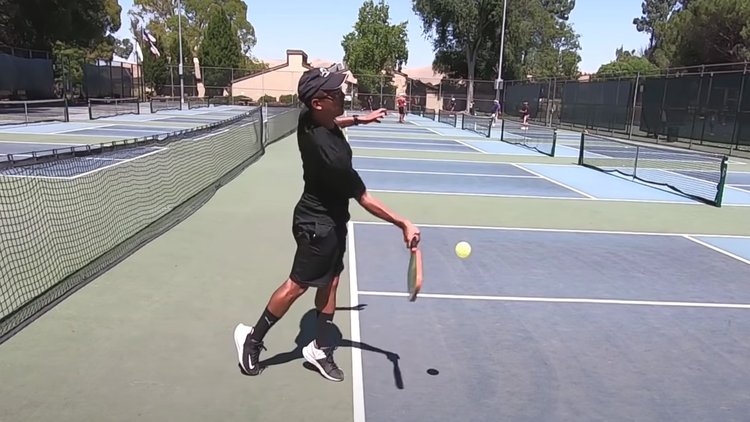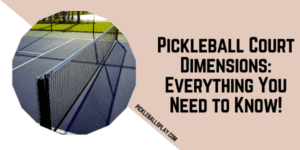As pickleball proliferates meeting swelling enthusiast demand, converted spaces like tennis courts sometimes utilize alternate playing surfaces beyond traditional asphalt or concrete composition. One such example includes artificial turf tennis layouts also accommodating pickleball line markings. How does rallying fare on this alternative playing field?
Surface Speed and Consistency
In terms of pace, artificial turf lands somewhere in the middle between smooth concrete’s lightning speed and clay court’s molasses. Expect shots to skip reasonably fast across the woven carpet-type grid of turf, which actually plays more consistently than real grass. Though minutely slower than hardcourts, turf allows solid traction for smoothly directional changes unlike clay’s slipperiness. This lends itself well to crisp competitive pickleball.

Textured Turf Alters Bounces
When hitting balls on artificial turf, players notice the most pronounced difference on shot bounce heights. While low skidding bounces dominate on hardcourts, turf’s textured fibers slightly grab and retard balls on contact. This results in noticeably higher bounces reminiscent of har-tru clay courts. The ball spring effect challenges reaction time returning shots, requiring adjustments.
Adapting Attack Angles and Net Clearance
Accounting for extra ball bounce height on turf means flattening attacking angles to avoid hitting long. Steep crosscourt shots that sharply bend inbounds on asphalt often skip wide of baseline confines when landing atop the turf carpet. Compensate stroking downwards through impact. At net, remember to sufficiently clear higher vaulting volleys barely tipping over instead of striking the sweet spot.
Serving Strategy Adjustments
Just like on clay, successfully placing precise serves hinges upon recalibrating swing efforts on turf courts. Dialing back excessive power prevents serve speed and spin from carrying long. Players accustomed to gaining aces from hardcourt heaters must mix in more swing finesse with less muscling on turf. Vary spins intelligently and barely clear the lowered pickleball net adjusting to higher ball flight resulting from surface friction.
Footwork Facilitates Rallies
During baseline exchanges, players will notice a “slowMo” effect on turf akin to clay whereby balls bounce back higher prolonging reachable timeframes. Quick reaction打 tend to dominate on unforgiving hardcourt cement. But on more playable artificial turf, supreme footwork rhythm and controlled positioning can prevail over raw explosiveness. Smooth lateral shuffle steps set up balanced shot selection.

Fatigue Factors Alter Late-Match Endurance
While artificial turf’s moderate give offers welcoming cushion, extended play does wear down leg stability muscles differently than firm asphalt. Core and hip strength face greater endurance tests sustaining lateral mobility as matches wear on. Also expect slightly more labored forward/backward strides from subtle sinking into the turf playing surface. Proper conditioning and rotational strength boosts durability.
FAQs
Do specialty pickleball paddles exist for playing on artificial turf?
Not currently, but as turf courts gain footing for pickleball, expect tailored paddle surfaces and grip options to emerge matching the textured ball friction and bounce behavior.
Does artificial turf boost injury prevention in pickleball vs concrete?
Yes, turf provides far more joint-friendly cushioning during play compared to unforgiving hardcourt cement. This decreases overall injury risk to knees, ankles and hips especially amid long tournaments.
Can portable turf roll-outs overlay tennis courts for temporary pickleball?
Yes, interlocking tile turf roll-outs enable quickly converting old tennis spaces into designated temporary pickleball courts complete with lines. These modular systems provide ball bounce and traction resembling permanent turf build-outs.
Conclusion
Artificial turf tennis court layouts certainly can accommodate enthusiastic pickleball play with a few stroke strategy and footwork adjustments navigating altered ball bounces. While pace stays reasonable mimicking hardcourts, adapting attack angles and developing balanced movement foundations helps excel on turf long-term. As facilities explore overlapping court sports amid swelling pickleball demand, mastering versatility across various surfaces like welcoming turf unlocks player development in every condition.




